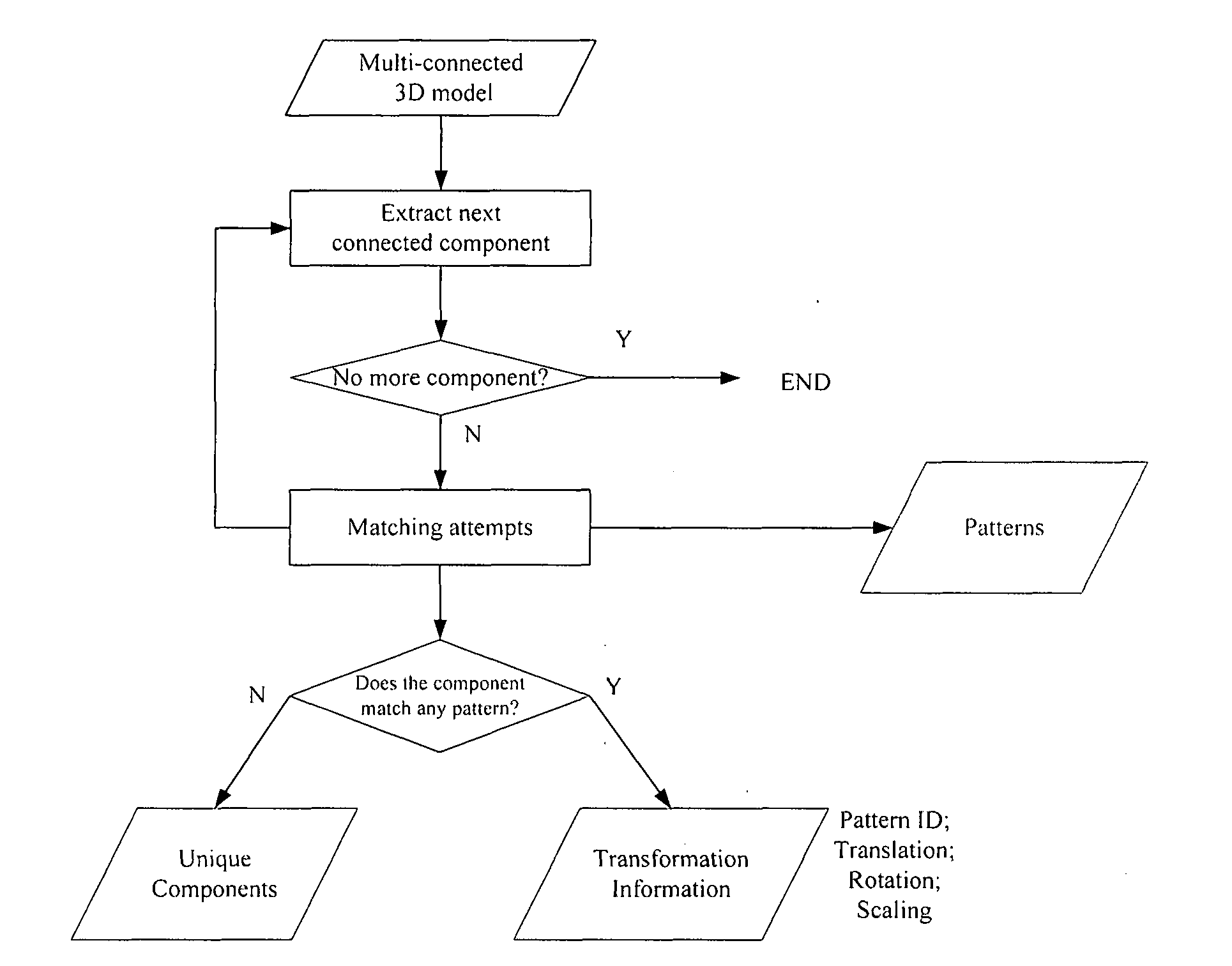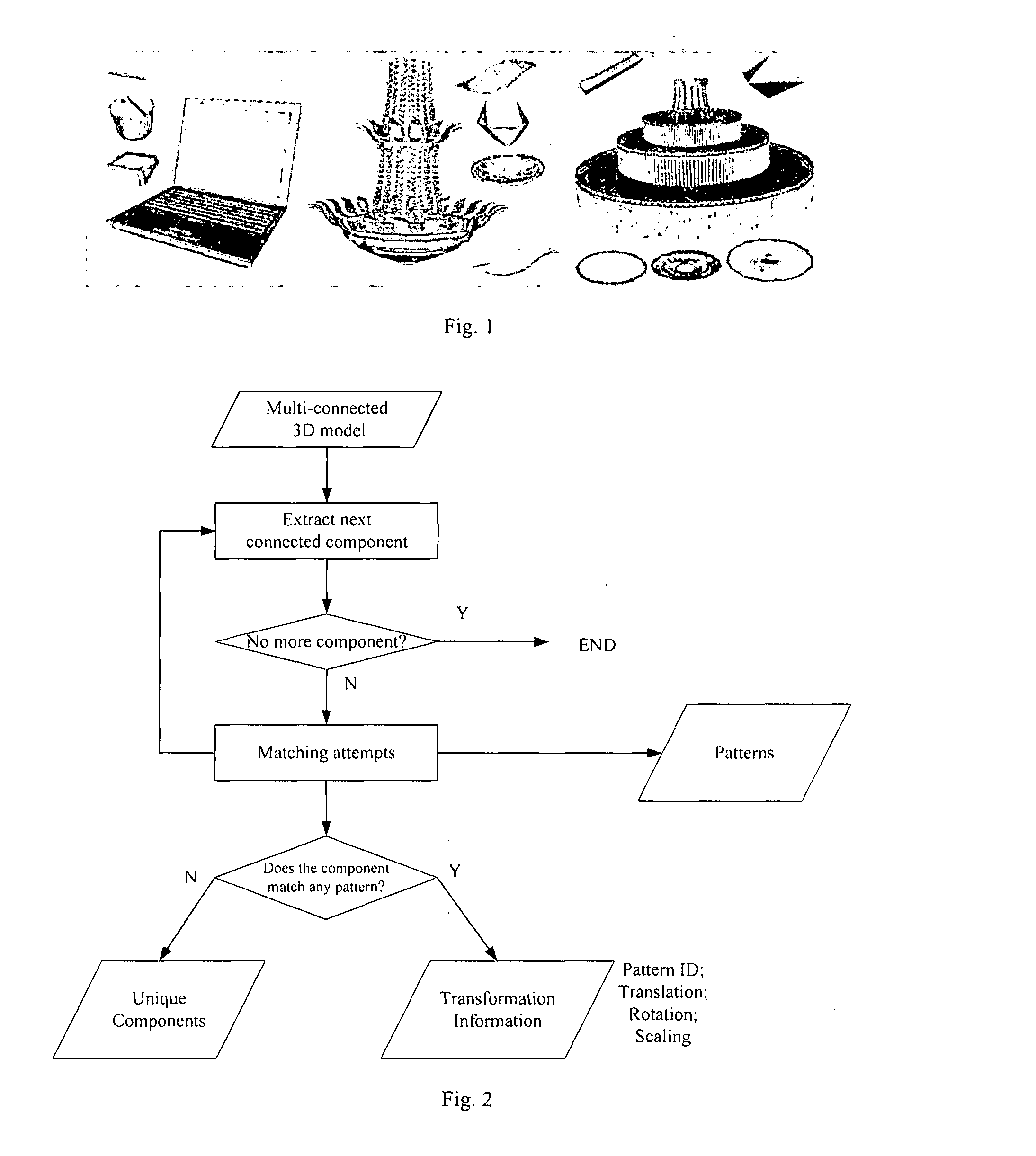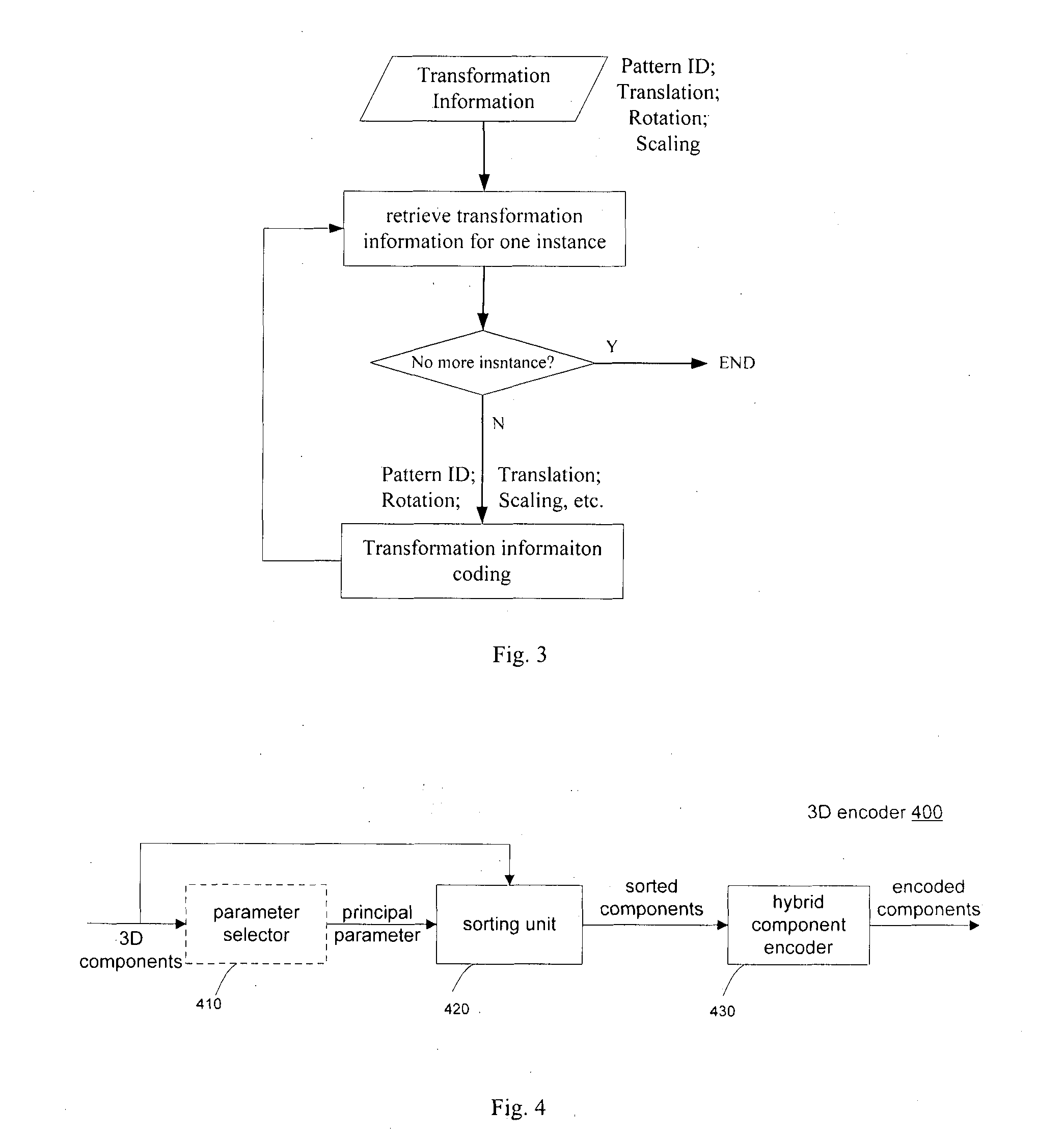Component sorting based encoding for 3D mesh compression
a 3d mesh and component sorting technology, applied in the field of three-dimensional (3d) models, can solve the problem that dimensions or components having higher precision may consume unnecessary bits, and achieve the effect of increasing the compression ratio of a 3d model
- Summary
- Abstract
- Description
- Claims
- Application Information
AI Technical Summary
Benefits of technology
Problems solved by technology
Method used
Image
Examples
Embodiment Construction
[0018]In the present invention, a solution to compressing components of a 3D model is proposed. By introducing prediction techniques among components and adaptive quantization strategy, a higher compression ratio for a 3D model is achieved.
[0019]FIG. 4 shows a block diagram of a 3D encoder for encoding components of a 3D model according to the principles of the current invention. It comprises an optional parameter selector 410, a sorting unit 420 and a hybrid component encoder 430. The optional parameter selector selects a principal parameter, according to which the components will be compressed. A principal parameter is one of the component parameters by which the components are sorted and incrementally encoded as will be discussed later. The principal parameter can also be determined beforehand, e.g. by simple agreement between the encoder and decoder or as specified in the coding standards, without going through the parameter selector. The sorting unit sorts these components base...
PUM
 Login to View More
Login to View More Abstract
Description
Claims
Application Information
 Login to View More
Login to View More - R&D
- Intellectual Property
- Life Sciences
- Materials
- Tech Scout
- Unparalleled Data Quality
- Higher Quality Content
- 60% Fewer Hallucinations
Browse by: Latest US Patents, China's latest patents, Technical Efficacy Thesaurus, Application Domain, Technology Topic, Popular Technical Reports.
© 2025 PatSnap. All rights reserved.Legal|Privacy policy|Modern Slavery Act Transparency Statement|Sitemap|About US| Contact US: help@patsnap.com



